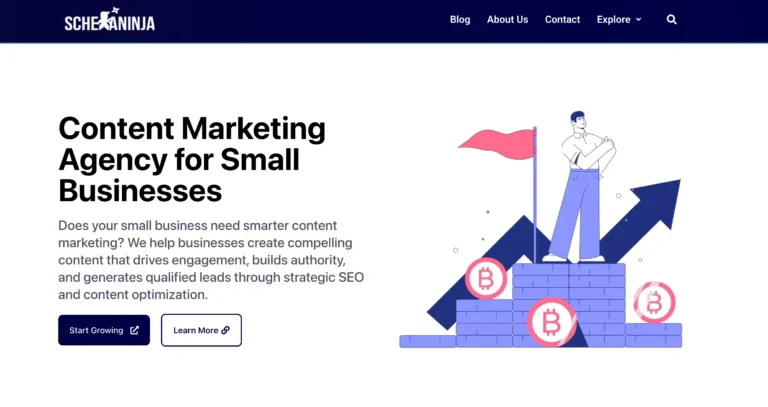The world of eLearning is growing like never before, and it's no surprise. With technology everywhere, an increasing number of people are opting for online learning, from career development to acquiring a new hobby.
It’s convenient, flexible, and fits into our busy lives. But what do the numbers say about how eLearning is changing the way we learn?
In this Blog, I’m sharing some eye-opening eLearning statistics that show just how much this trend is taking over and what it means for the future of education.
10 Quick Facts About eLearning in 2025
Before we get into the details, let's look at some of the most surprising facts that show just how huge online learning has become.
- Incredible Growth: The online learning market has experienced a staggering 900% growth since 2000. It is the fastest-growing part of the entire education industry.
- A Giant Market: The global e-learning market is expected to be worth $320.96 billion in 2025. That's more than the entire economy of some countries.
- You Remember More: Studies show that students retain 25% to 60% more information when learning online, compared to only 8-10% in a traditional classroom.
- Big Companies Use It: 4 out of 10 Fortune 500 companies (the biggest companies in the US) use eLearning to train their employees.
- Students Prefer It: A significant majority of students (70%) report that online learning is preferable to traditional classroom learning.
- AI is a Game-Changer: Utilizing Artificial Intelligence (AI) in eLearning has increased student engagement by an impressive 80%.
- Almost All Businesses are On Board: 93% of businesses around the world plan to use e-learning methods for their teams.
- It Saves a Ton of Time: Online learning can reduce the time needed to learn a subject by 40% to 60%.
- It’s Eco-Friendly: Online courses use 90% less energy and produce 85% less CO2 per student than in-person learning.
- Most Universities Have Moved Online: An incredible 98% of universities now offer at least some of their courses online.
Source: Statista
How e-Learning Is Changing Education and Business?
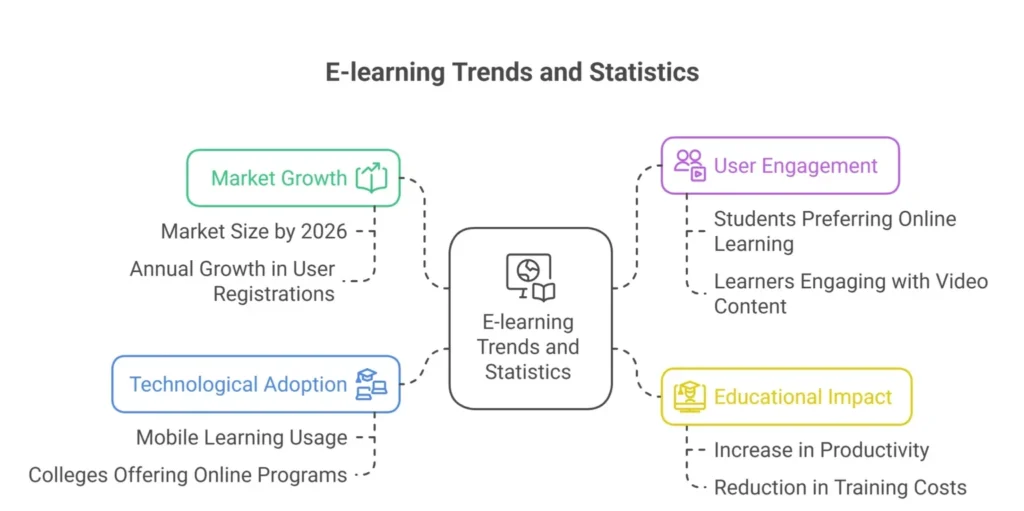
If You Are a STUDENT:
- You Will Learn More Effectively: The fact that students retain 25-60% more information online is a huge deal. This means the time you spend studying is more valuable. You are more likely to remember what you learn for your exams and for your future career.
- You Have Total Flexibility: The #1 reason students choose online learning is for its flexibility. 63% of students pick online programs because they can fit them around their jobs, families, and personal lives. You can learn late at night, early in the morning, or on the weekends.
- You Can Improve Your Grades: 81% of students (that’s 8 out of 10) say that using digital learning tools helped them get better grades.
- You Are Not Alone: With 98% of universities offering online courses, you are part of a massive global community. More than 200 million people signed up for online courses last year.
- You Will Learn More Than Just Facts: 60% of online students reported that they improved important “soft skills” like communication, teamwork, and time management.
If You Are a BUSINESS LEADER or MANAGER:
If you are thinking about training your employees, the numbers show that eLearning is one of the smartest investments you can make.
- It Makes Your Company More Money: This is not an opinion; it's a fact. Companies that have strong online training programs generate 218% higher revenue per employee. That's a massive return on investment.
- Your Employees Will Be Happier and More Engaged: Happy employees do better work. Online learning boosts employee engagement by 18%. It shows you are investing in their growth, which makes them more loyal to the company.
- It Saves Time and Money: Employee training can be expensive and time-consuming. Online learning requires 40% to 60% less time for your employees to learn the same material. IBM famously found that for every $1 they invested in online training, they got $30 back in productivity.
- It Keeps You Competitive: 72% of companies say that using online learning helps them stay competitive in their industry. It allows your team to learn new skills quickly and adapt to changes in the market.
If You Are a TEACHER or EDUCATOR:
The shift to online learning has changed your job more than anyone's. The statistics show both opportunities and challenges.
- The Tools Are on Your Side: You are not alone in using technology. 85% of teachers use digital learning tools to help their students. And 7 out of 10 teachers agree that these tools are very helpful.
- You Can Personalize Learning: 35% of school administrators believe that eLearning helps them personalize instruction for each student's skill level. You can give advanced students extra challenges and provide extra help to those who are struggling.
- But You Must Be Aware of the Challenges: The biggest concern for K-12 educators is the amount of screen time students have (36% are worried). Another major issue is the “digital divide” not all students have reliable internet or a good computer at home.
Source: cpr. heart
How Big is the eLearning Market?
The growth of online learning is best seen in the money it generates. The market is huge and expanding every single year.
The global e-learning market is projected to reach $320.96 billion in 2025.
To put that in perspective, that is more than the entire Gross Domestic Product (GDP) of countries like New Zealand or Portugal.
And it's not stopping there. By 2028, the market is expected to grow to an incredible $539.88 billion. This shows a strong Compound Annual Growth Rate (CAGR) of 14.1%, which simply means the market is growing by an average of over 14% every single year.
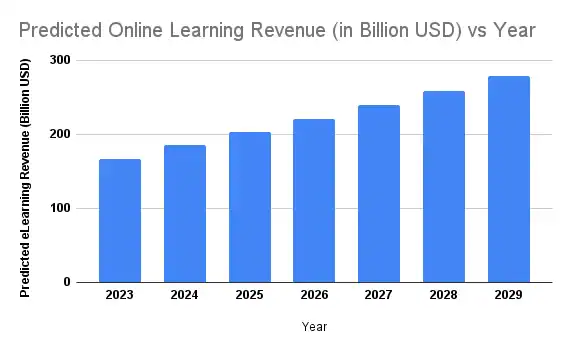
| Year | Predicted Online Learning Revenue |
| 2023 | $166.60 billion |
| 2024 | $185.20 billion |
| 2025 | $203.80 billion |
| 2026 | $220.80 billion |
| 2027 | $239.30 billion |
| 2028 | $259.00 billion |
| 2029 | $279.30 billion |
Sources: (Statista, Demandsage, elearningstats. education, Sci.techtoday, worldeconomicforum, learnworlds, Techfloor, research.com)
Where Does the Money Come From?
The e-learning market is made up of a few different parts. Here’s a breakdown of where the revenue comes from.
- Online University Education: This is the largest component. It includes everything from full online degrees to single college courses. This sector is expected to generate $120.70 billion.
- Online Learning Platforms: These include platforms such as Coursera, Udemy, and Skillshare, where you can learn almost anything. This sector is expected to generate $58.45 billion.
- Professional Certificates: This includes online courses that give you a certificate for a specific job skill, like digital marketing or data science. This sector is expected to contribute $6.04 billion.
Fastest-Growing e-Learning Countries
Online learning is for everyone, from young students to older adults looking for a career change.
- The average age of an online student is 32 years old.
- It's almost an even split between genders. On Coursera, for example, 53% of students are male and 47% are female.
- More than 220 million people signed up for Massive Open Online Courses (MOOCs) in 2022.
Online Learning Around the Globe
While online learning is a global phenomenon, some countries have more learners than others.
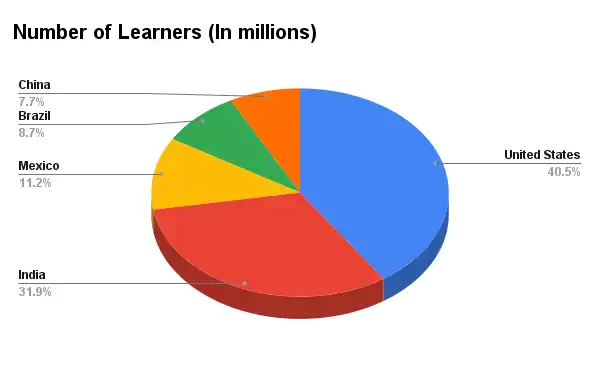
| Top Countries by Number of Learners (on Coursera) |
| 1. United States (17.3 million) |
| 2. India (13.6 million) |
| 3. Mexico (4.8 million) |
| 4. Brazil (3.7 million) |
| 5. China (3.3 million) |
While the US has the most learners, other countries are catching up incredibly fast. Here are the countries with the fastest growth in new online learners.
| Countries with the Fastest Growth of New Learners |
| 1. Paraguay (98% growth) |
| 2. Lebanon (97% growth) |
| 3. Philippines (85% growth) |
| 4. Guyana (74% growth) |
| 5. Indonesia (74% growth) |
Must-Know eLearning Statistics for Course Creators
- Huge Market Growth: The global eLearning market is forecasted to reach $400 billion by 2025, with the potential to expand to $1 trillion by 2028, reflecting its rapid growth and widespread adoption across various industries and education sectors.
- Online Courses Are In High Demand: Online courses remain the top choice for learners due to their flexibility and accessibility. Platforms like Udemy have made it easier to create, market, and sell these courses to a large, diverse audience.
- High Earners Depend on Online Courses: Among eLearning professionals earning over $100K annually, 70% report that their primary source of income is through the creation and sale of online courses, showcasing the financial potential of this growing industry.
- AI Is Shaping eLearning: Nearly 49% of learners are comfortable with content created by artificial intelligence. Additionally, 70% of top course creators have stated that AI tools help save them over 26 hours a week, streamlining course creation and content management.
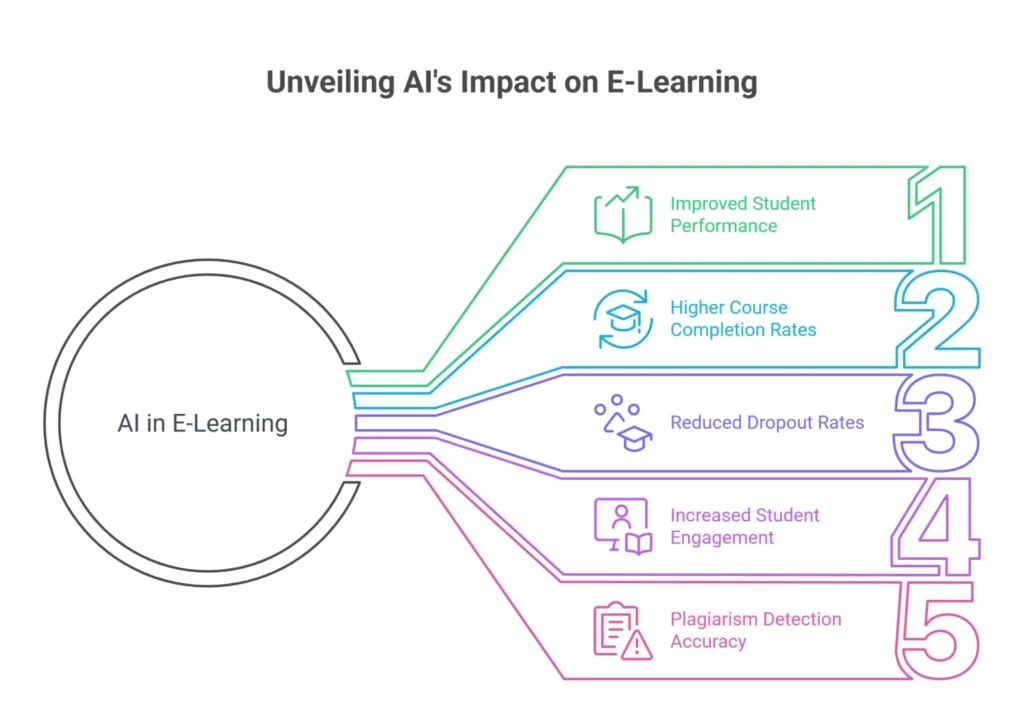
- MOOCs Are Expanding Rapidly: The Massive Open Online Course (MOOC) market was valued at $12.5 billion in 2024, and projections suggest it could soar to $112 billion by 2031 as more learners around the world turn to online platforms for education.
- Mobile Learning Continues to Grow: Mobile learning, which was valued at $22.4 billion in 2020, is expected to experience substantial growth, reaching $80.1 billion by 2027, as smartphones and tablets make learning more accessible and convenient for people on the go.
- Better Learning Outcomes: Research shows that online courses can improve student retention rates by 25-60%, significantly higher than the 8-10% retention rate seen in traditional, in-person learning environments.
- Time Efficiency in eLearning: eLearning enables students to learn 40-60% faster than through traditional methods, allowing them to absorb and apply knowledge in less time while maintaining high learning outcomes.
- Business Growth Through eLearning: Companies implementing eLearning programs report a 42% increase in revenue and 218% more income per employee, highlighting the business advantages of offering online training to improve skills and productivity.
- Student Demand for Online Learning: A strong 73% of students in the U.S. expressed interest in continuing online courses even after the pandemic, reflecting a shift in preferences toward flexible, online education.
- Corporate Training Is Moving Online: 90% of businesses now use eLearning as a tool for employee training, a significant increase from only 4% in 1995, demonstrating the growing trend of companies investing in online learning platforms for workforce development.
- Course Creation Costs: The cost of developing a high-quality, one-hour online course ranges from $4,000 to $10,000, and the process can take anywhere from 180 to 360 hours of work, depending on the complexity of the course content and production.
- Engagement Is Crucial for Success: According to 78% of course creators, consistently engaging with their audience is one of the most important factors for achieving success and maintaining learner interest throughout the course.
- Higher Completion Rates in Online Courses: Online courses tend to have completion rates of 12-15%, significantly higher than the 4-9% completion rates typically seen in traditional classroom settings, showing that learners are more likely to complete online courses.
- Environmental Benefits of eLearning: eLearning is more eco-friendly than traditional learning methods, using up to 90% less energy and generating 85% fewer CO2 emissions compared to in-person courses, contributing to a more sustainable educational model.
The Challenges of Online Learning
As great as online learning is, it is not perfect. There are some serious challenges that schools, companies, and governments need to solve.
- The Digital Divide: This is the biggest and most serious problem. Not everyone has access to the tools needed for online learning. In the United States, 25% of low-income students have limited access to a reliable computer or high-speed internet. This puts them at a major disadvantage compared to their peers.
- Security and Safety: When students, especially K-12 students, are online all day, safety becomes a big concern. School devices often have low antivirus compliance rates, which opens them up to security risks. Furthermore, it is a challenge to keep students away from inappropriate content online. Studies have found that students can spend up to an hour per day on distracting or inappropriate sites.
- Too Much Screen Time: Both parents and teachers worry about the health effects of students staring at screens for many hours a day. 36% of K-12 educators see this as a major challenge of digital learning. It can lead to eye strain, poor posture, and less physical activity.
- Lack of Social Interaction: While online forums can be helpful, nothing can fully replace face-to-face interaction with teachers and classmates. Some students can feel isolated or miss out on the social aspects of learning that happen in a physical classroom.
Quicklinks:
- YouTube Shorts Statistics: Users, Growth & Revenue
- WhatsApp Statistics: Usage, Revenue & Growth Insights
- Tumblr Statistics Active Users, Revenue & User Growth
- X (Twitter) Statistics: Active Users, Trends & Growth
- Tinder Statistics | Users, Revenue & Growth Insights
Conclusion: The Future is Online, and It's Happening Now
Online learning is here to stay. It’s not just a trend but a major shift in how we learn and gain skills.
The e-learning market is booming, worth billions and growing fast. For students, it’s more effective, flexible, and engaging. For businesses, it boosts profits, productivity, and employee satisfaction.
Yes, there are challenges like the digital divide and ensuring safety, but with advancements in AI, virtual reality, and personalized learning, online education is only getting better. In the Coming Years, eLearning will be a key part of our world, not just an alternative.
Sources: (Statista, Demandsage, elearningstats. education, Sci.techtoday, worldeconomicforum, learnworlds, Techfloor, research.com)


